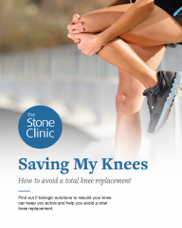Roger Federer and the End of Athlete’s Knee
Roger Federer has retired, mostly due to his knees. This is tragic but extremely common and often avoidable. Here is how.

Federer injured his knee in 2016, then underwent a knee surgery where the meniscus was “trimmed”—i.e. a key portion of tissue was removed. He was able to return to top-level play for years. However, unfortunately, we know that almost all of the meniscus is critical, and removing a part changes the loading on the tibia, often leading to the predictable outcome: eventual pain, more surgery, more pain, and retirement. Though it often takes a few years to fully manifest, the surfaces may eventually erode and arthritis sets in. In Federer’s case, different injuries over the years may have combined to take their toll.
The solution is to save the meniscus on day one. The sooner a meniscus is repaired, the better. If it is not repairable, or if the repair doesn’t work, a meniscus transplant is the solution. Meniscus transplants have permitted athletes to get back to full sports and have delayed the time until knee replacement is needed—even in severely arthritic knees—by years.
So why are so many meniscus tears being treated with tissue removal?
The reasons are many, but they begin with how surgeons are trained and the biases instilled in them. Resection of the meniscus “solves” the knee problem for the short term and is cheap and fast. Traditionally, surgeons repaired very few meniscus tears as this required specialized training and assistance. More recently, though, repair techniques have improved so much that many meniscus tears can be saved by surgical suture repair augmented with the release of marrow stem/progenitor cells. Such techniques eliminate the need for large posterior and side incisions. Tears of the roots of the meniscus (i.e., where the meniscus is anchored to the tibia) are now recognized to be primary causes of early arthritis and root repair techniques have been optimized with custom guides specifically designed for the medial and lateral roots.
The tissue regeneration techniques for actually re-growing the meniscus initially took off with the introduction of the collagen meniscus implant device. While the clinical studies and direct experience of the procedure were encouraging, the response was not high enough to justify keeping the device on the market. This was attributed partially to the soft, flimsy nature of the device, which often broke in the surgeons’ hands. We are currently reinventing this device with a stronger collagen construct. Meniscus regeneration will return to surgeons and patients in the near future.
The rehabilitation of meniscus repairs and replacements has also been accelerated. No longer do many patients have to be on crutches for months at a time. Often the crutches can be eliminated in a few days, depending on the stability of the repair. The key—especially in top-level athletes—is to minimize leg atrophy so a full-body training program can be initiated as soon as possible.
Artificial replacement of the meniscus has failed in almost every attempt. This is especially with athletes. The meniscus’s remarkable ability to be soft enough as to not damage the opposing articular cartilage, yet durable enough to take the impact of sports, is a contradictory set of requirements in all but living tissue. Normal human collagen tissue is five times as slick as ice on ice and can remodel itself while absorbing and releasing water and lubricants during the compression and unloading caused by walking and running. No artificial material is strong enough and soft enough, much less slick enough, to reproduce the mechanics required to preserve the joint.
The loss of Roger Federer to tennis is a loss for all of us. Sadly, it may be due to the lack of restoration of normal anatomy in multiple areas …and thus he lost the ability to continue competing in the sport he loved—and excelled at—for many years.
Our BioKnee® program biologically regenerates articular cartilage tissue. Head here to learn about our alternative to knee replacement.


